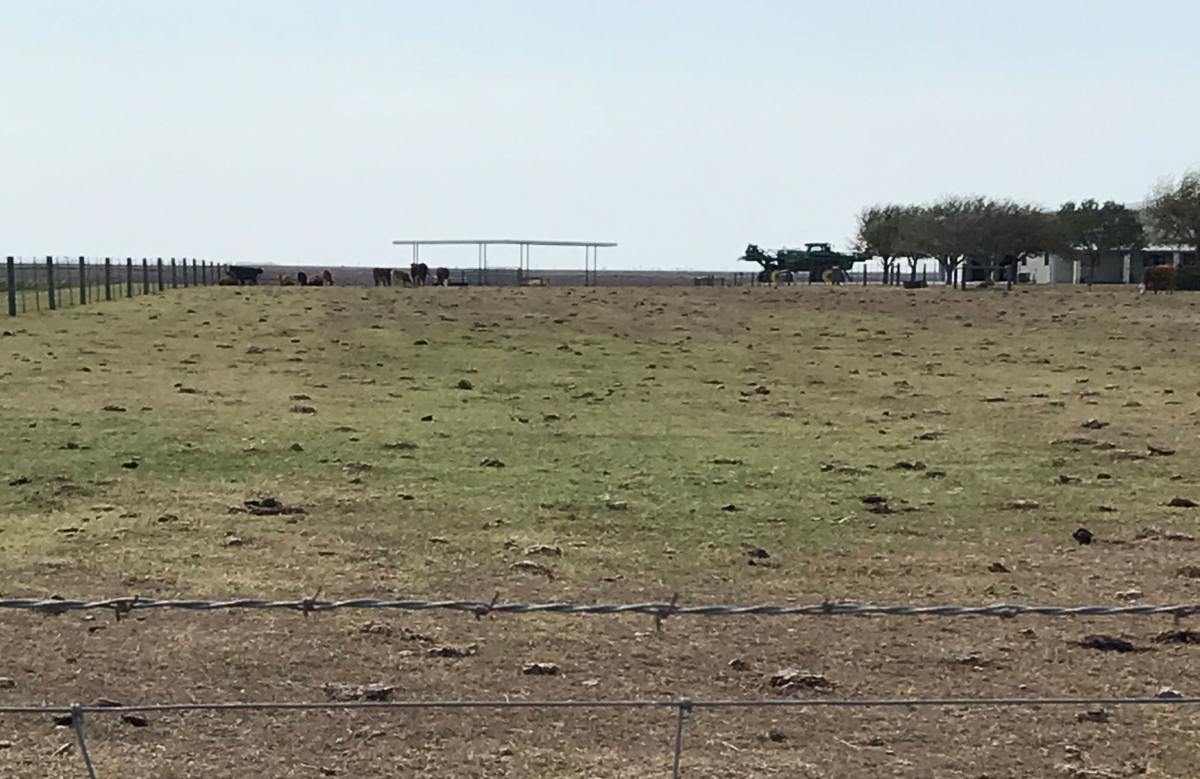By Jennifer Dorsett
Field Editor
Crops in the Rio Grande Valley (RGV) are facing a tough growing season. High temperatures, high winds and dry conditions have all taken their toll on crops, and farmers say without a considerable amount of rain—and soon—things are only going to get worse.
“The drought situation that we’re in, that’s bad. But then add in the low prices on all the commodities, and it’s hard to catch farmers with a smile on their face right now. The whole situation is pretty grim,” Brady Taubert, RGV Gin manager and cotton farmer, said.
The RGV covers Cameron, Hidalgo, Starr and Willacy counties, stretching along the southernmost tip of Texas along the U.S.-Mexico border. Every county currently is in some stage of drought, with pockets of Cameron, Hidalgo and Starr in severe drought.
The area shares two Rio Grande River Basin reservoirs with Mexico, Lakes Amistad and Falcon. By treaty, Texas has rights to 56.2 percent of the total conservation capacity of Amistad and 58.6 percent of Falcon.
But the future of the water supply is not looking good right now, according to Taubert.
“The irrigation district that most of our farmers farm in, we’re all right for water for this year. But next year is going to be a real issue,” Taubert, who is also the Cameron County Farm Bureau president, said. “If the lakes keep going down the way they’ve been going down, they’re liable to cut us off. The municipalities are going to get their water first and foremost. You know, the farmers just get what’s left.”
The latest data from Texas Water Development Board (TWDB) shows reservoir levels hovering around 26 percent for the past two months.
Of the estimated 166,000 acres of cotton planted in the region earlier this spring, more than 35,000 will be or already have been plowed under. In Cameron County, Taubert said about 1,200 acres of planted cotton that would normally be delivered to his gin have been plowed under because of the lingering drought.
Some farmers might consider planting a second crop to replace the cotton acres destroyed, Taubert noted.
“But if we don’t hurry up and get a rain, that’s not even going to be an option. That land will just sit fallow for the year,” he said. “Most of the acres in my area are irrigated, but it’s usually pretty salty. Without help from Mother Nature and some sweet water, the crop is not going to be near what it could be. We’re going to have to get a rain in the next week, or we’re going to lose more acres.”
In the Upper Valley, which has fared somewhat better than its neighbors along the coast, the situation is still dire. The lack of rainfall is affecting dryland crops, including those planted by Spence Pennington, who grows cotton, grain sorghum, corn, sesame and sugarcane, primarily in Willacy County.
“We’re about 70 to 75 percent dryland,” Pennington said. “We definitely went into our planning season with not enough moisture. A lot of guys were able to go deep and get the crop to germinate, but others, including ourselves, had to do what we call ‘dusting in’ and put it on top and then wait for rains. We need a widespread two- to three-inch rain, and we needed it yesterday.”
There have been several days in the RGV with dry north winds that kept temperatures down, and a few wet, humid mornings, he said, but still no rain.
“The final numbers will come in pretty soon, but I have neighbors that have zero cotton. They plowed out all of it. We’ve plowed out a couple hundred acres,” Pennington said. “Our neighbors have gone back with crops, such as corn, sesame and grain sorghum. Right now, though, we have some fields that there’s still not enough moisture to even germinate the seed that was there, much less go back with a second crop.”
Some of the RGV grain sorghum crop looks fair, but without moisture, that probably won’t last. Charcoal rot, aphids and hungry wildlife are taking their toll, according to Pennington.
“That cotton if it could get a rain, there’s still a chance,” he said. “Unfortunately, with the commodity prices the way they are, it’s just not looking good this year. Our crop doesn’t look good, our prices are down and some of the inputs are up.”
But farmers—including himself—are eternal optimists, Pennington noted. He said Mother Nature will see him and others through this rough patch, and better days will come again.
“In the Rio Grande Valley, we like to think we can grow just about anything. We’re just waiting for Mother Nature to bring us some much-needed moisture, and then we’ll go back with another crop,” he said. “There’s always a crop available in the Valley, you just have to see what fits best into that time period, region and soil type. So, we’re just waiting for that next rainfall right now, and we’re one day closer.”

